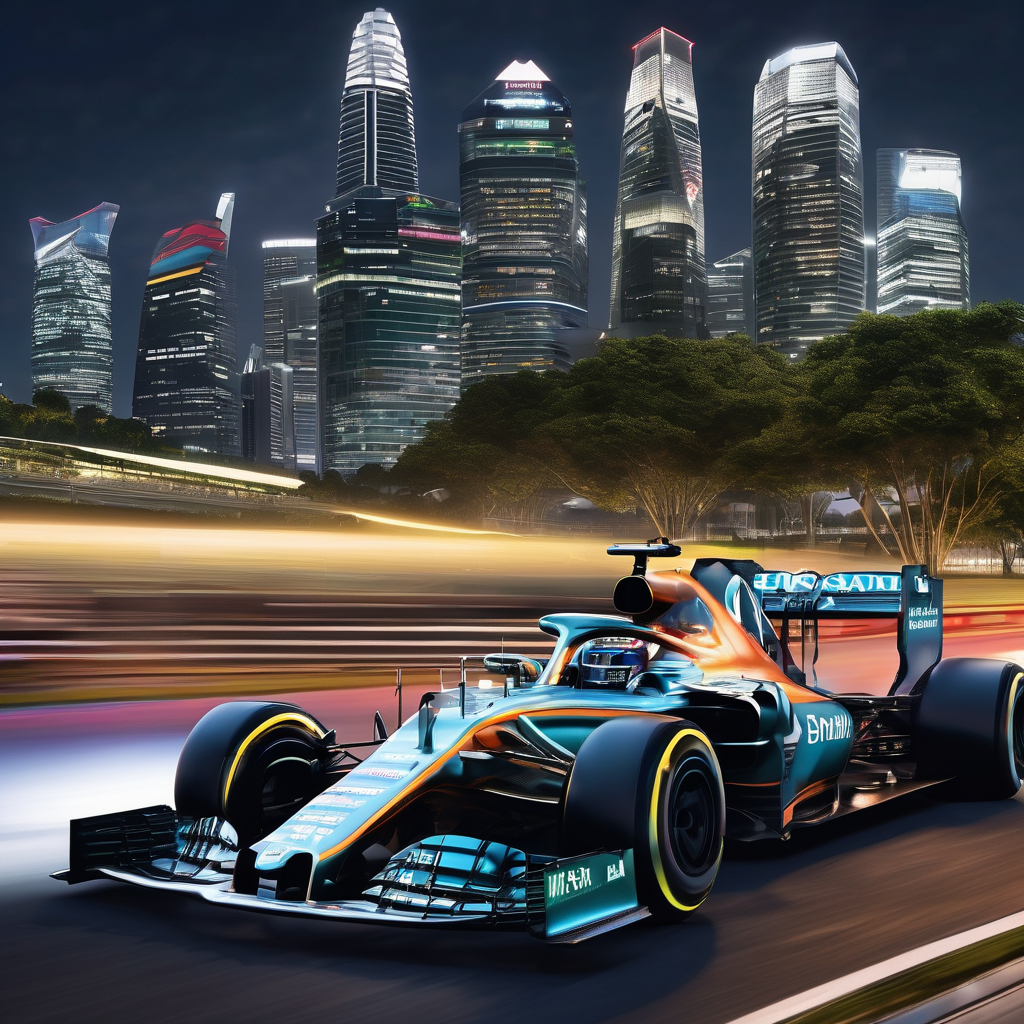Formula One is set to illuminate the Marina Bay Street Circuit in Singapore for the highly anticipated Singapore Grand Prix. This venue, while relatively new since its debut in 2008, has gained recognition not just for its night-time racing, but also for its notorious history, particularly the infamous “Crashgate” scandal that marred its inaugural event.
The Marina Bay track presents a challenging layout characterized by its tight corners and minimal room for error. Ahead of the 2023 race, the circuit saw a reduction in corners from 23 to 19, simplifying the layout to enhance the driving experience. Interestingly, for the 2025 edition, the pit lane speed limit will increase from 37 mph (60 km/h) to 49 mph (80 km/h) following a widening of the pit lane, which is expected to significantly cut down pit stop times.
In a bid to improve overtaking opportunities, a fourth DRS zone was introduced between Turns 14 and 16 for the 2024 race. With the ongoing resurfacing of certain track areas, fans and drivers alike will be keen to see how these changes impact the circuit’s characteristics, especially given its reliance on public roads, which can affect track conditions.
The challenge of racing in Singapore is further amplified by the region’s hot and humid climate. Drivers often undergo intense physical preparation, with many training in saunas to acclimate to the sweltering conditions. The race can result in drivers losing up to three kilograms during competition due to heat, adding to the mental and physical demands of navigating the narrow streets at high speeds.
Notably, Lando Norris took victory in the previous season by a margin of over 20 seconds, and McLaren is on the brink of securing its second consecutive constructors’ championship if either Norris or teammate Oscar Piastri achieves a minimum of 13 points this weekend.
The Singapore Grand Prix has also marked historical moments in the sport, notably the contested 2008 race that highlighted the scandal involving Renault’s team orders. This incident had far-reaching impacts on that season’s championship battle, with Felipe Massa later filing a lawsuit seeking $80 million in damages related to the events of that race.
Sustainability efforts are also at the forefront of this year’s Grand Prix. Following a carbon footprint report that revealed a majority of emissions were derived from energy, organizers initiated various green initiatives. This includes transitioning to renewable fuel options in race generators, installation of solar panels on the pit building, and replacing track lighting with energy-efficient LED systems, all contributing to a marked reduction in energy consumption and environmental impact.
The Marina Bay Street Circuit continues to evolve, and this year’s preparations demonstrate a commitment to both competitive performance and sustainable practices, setting a hopeful tone for future races in Formula One.
